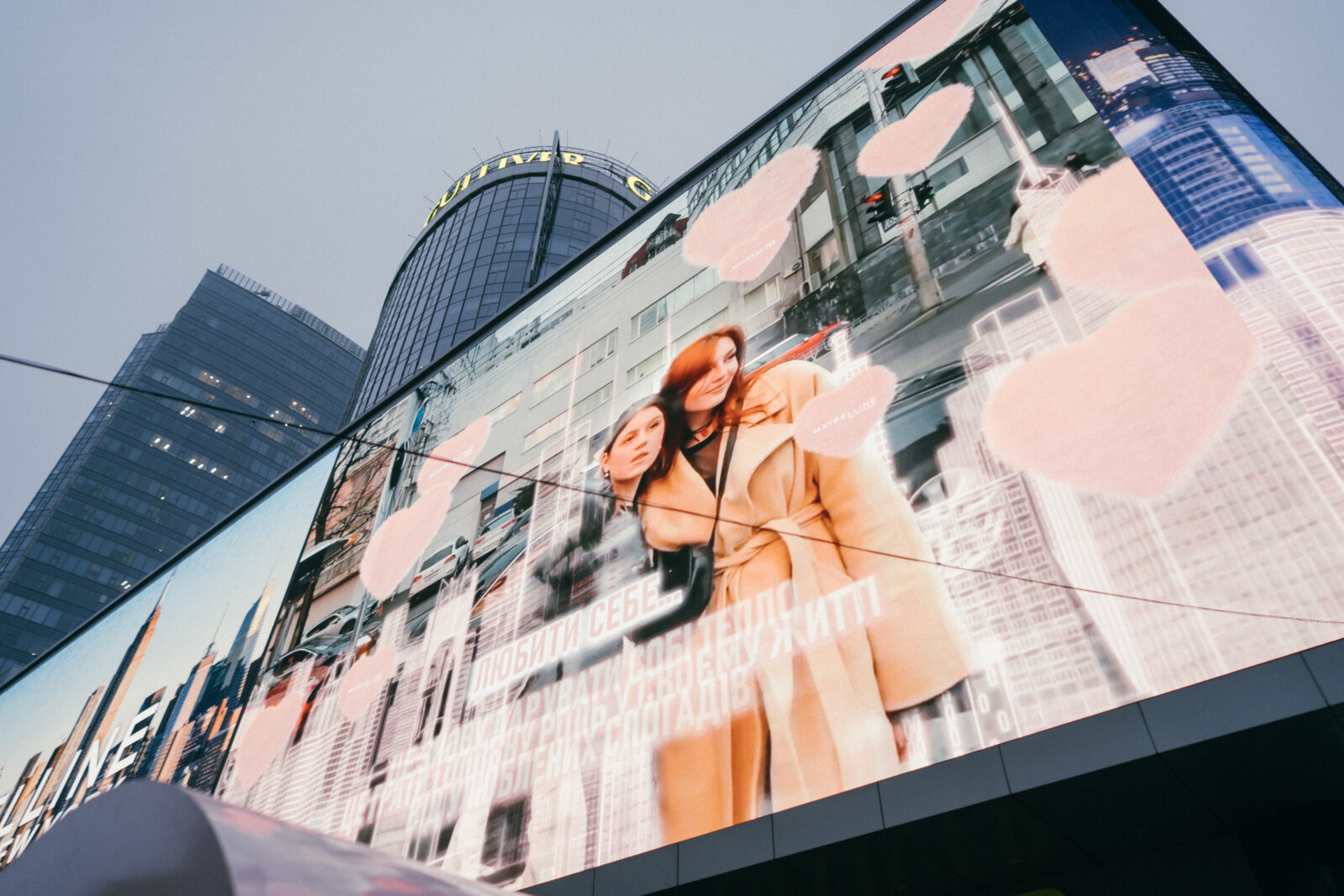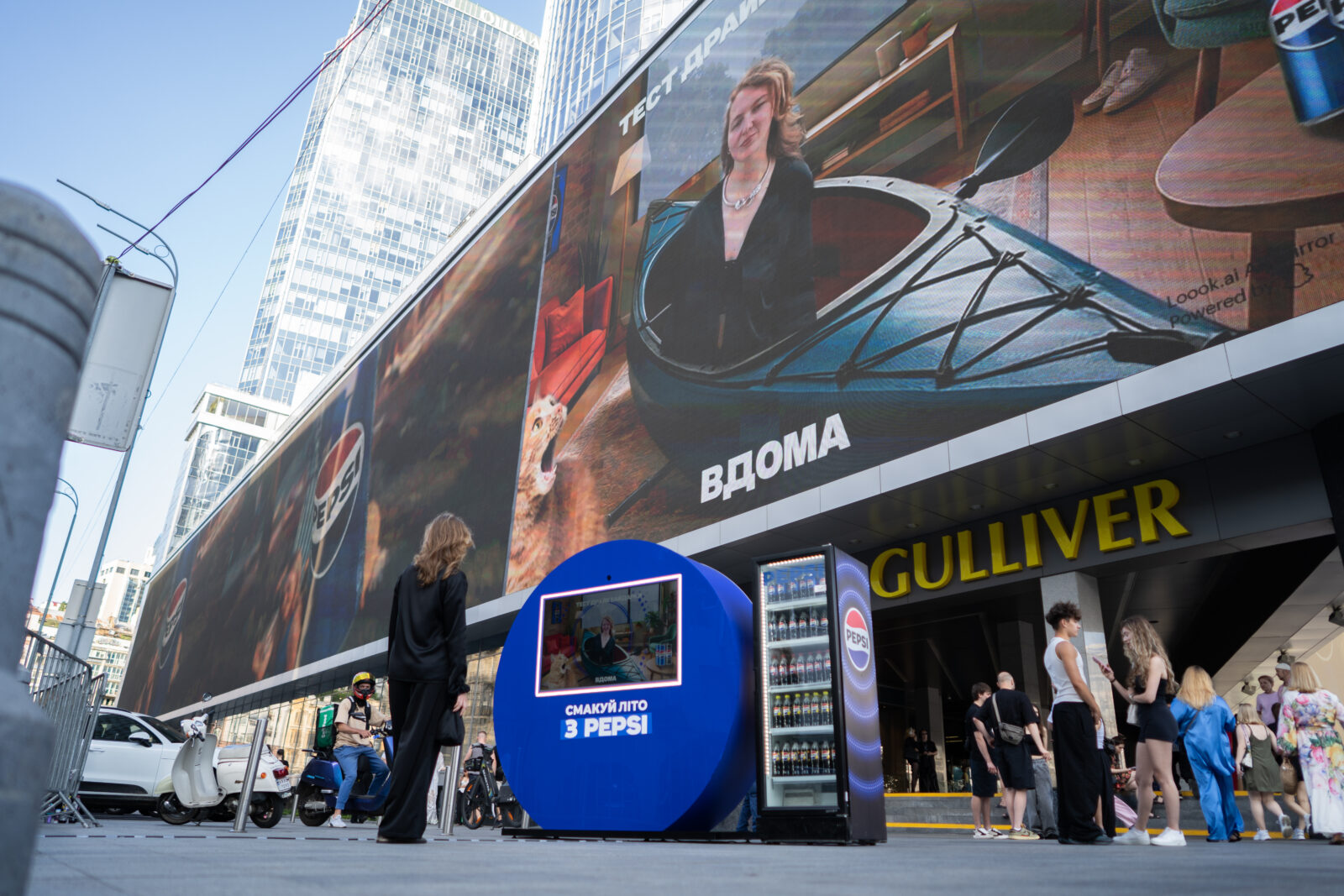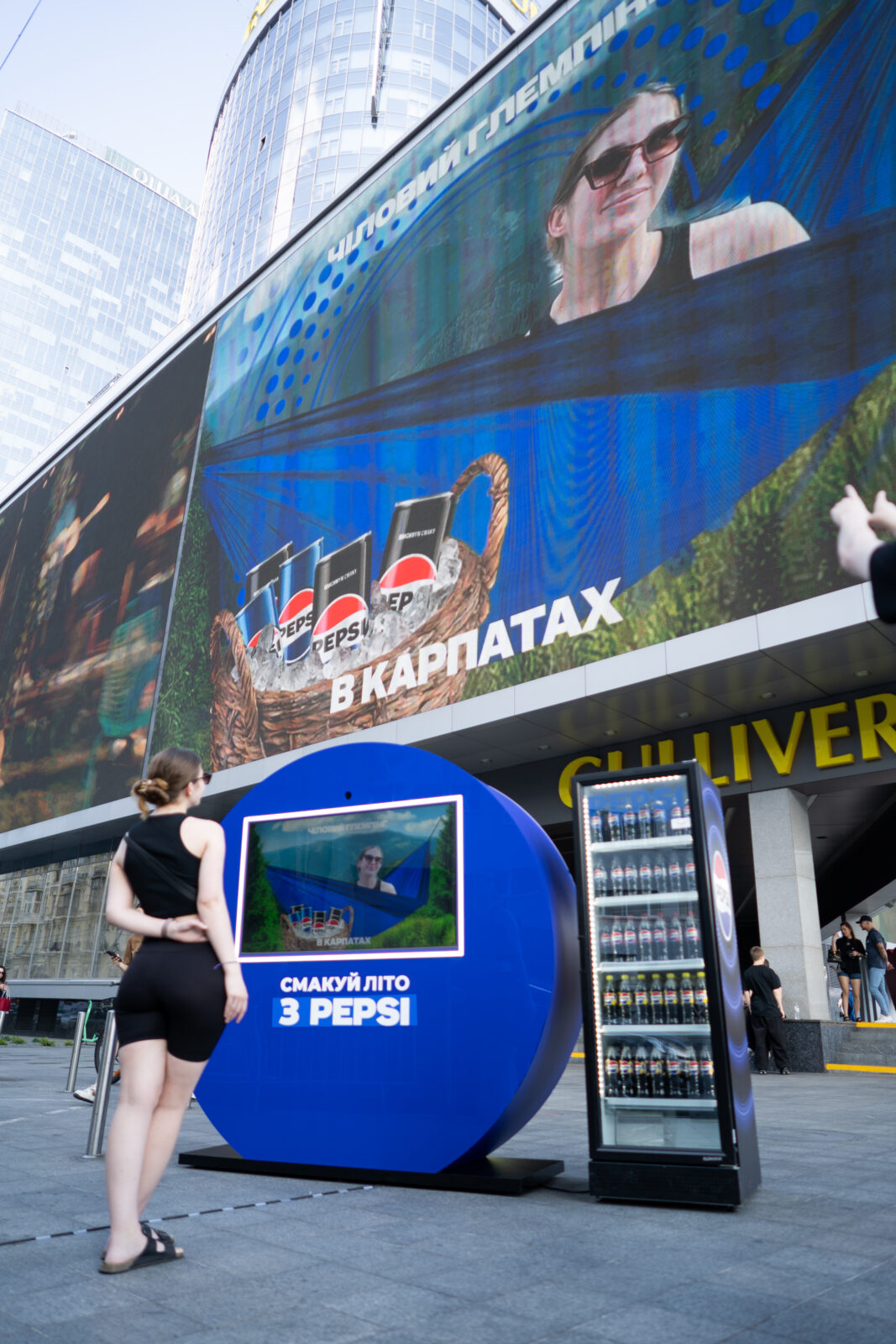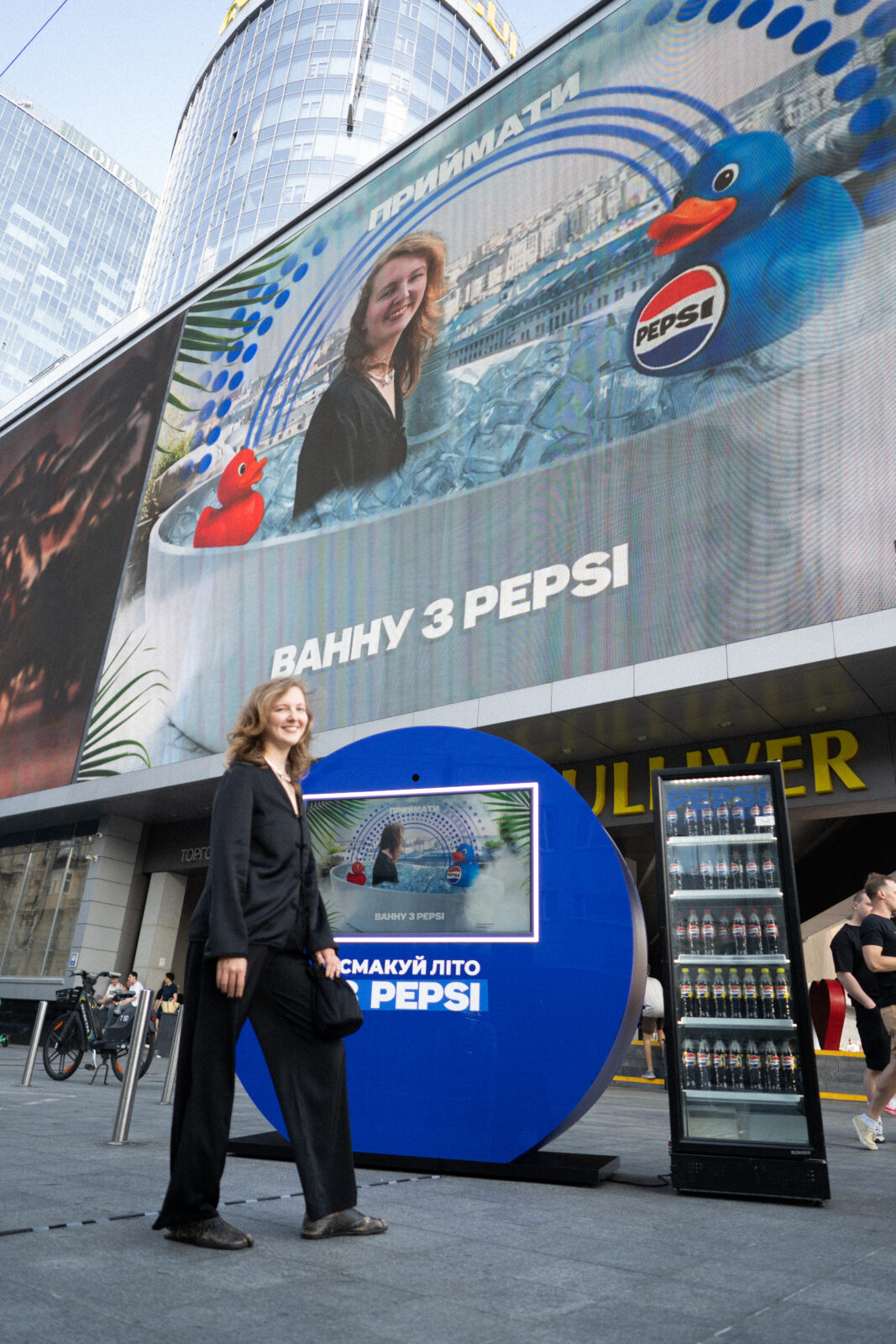Out-of-home (OOH) advertising has long been about high-impact messaging — think towering billboards, branded metro stations, or massive LED screens in city squares. But in an era where attention spans are short and digital expectations are high, static formats aren’t enough. Today, the most effective OOH ads aren’t just seen — they’re experienced.
Interactive OOH advertising blends the broad visibility of traditional media with the engagement power of digital technology. It transforms urban environments into immersive brand touchpoints — where people don’t just watch your ad; they play with it, personalize it, and share it.
What Is Interactive Out-of-Home Advertising?
Interactive out-of-home (OOH) advertising uses real-time technology and immersive media to turn standard billboards, kiosks, screens, or installations into two-way experiences. Instead of passively displaying a message, these formats invite the audience to interact using:
- Augmented Reality (AR) — Try-ons, face filters, gamified experiences, or 3D animations.
- Touchscreens and Sensors — React to gestures, proximity, or taps.
- QR codes, NFC, and Geolocation — Connect the real world to digital platforms instantly.
- AI & Computer Vision — Adapt messaging to audience demographics or emotional cues.
- Social Media Integration — Trigger user-generated content and social sharing.
Whether it’s an AR lipstick try-on at a transit hub or a billboard that dances with you, these ads deliver storytelling that’s memorable, measurable, and socially shareable.
Only 14% Remember Ads — It’s Time for a Smarter OOH Strategy
As digital consumers develop resistance to display banners, a parallel trend emerges in outdoor advertising—audiences are increasingly filtering out traditional OOH messages. This cognitive phenomenon, termed “banner blindness,” represents our natural tendency to screen out visual noise in our environment. Research by Infolinks reveals a striking reality: only 14% of people could identify the last display ad they encountered and its associated brand, while a mere 2.8% found the content personally relevant.
The business implications of this attention deficit are substantial: misallocated marketing resources, diminished brand recognition, disconnection from intended audiences, competitive setbacks, and lost opportunities for valuable consumer data collection.
Interactive OOH offers a compelling solution by transforming passive messaging into engaging, participatory experiences. The data supports this approach: interactive elements (including augmented reality features, interactive digital displays, and motion-responsive installations) demonstrate engagement increases of up to 75% compared to traditional static formats (byyd.me). When brands invite active participation rather than passive viewing, they create distinctive encounters that resonate in public spaces—fostering genuine connections rather than contributing to visual clutter.
More Than Tech: The Psychological Drivers of Interactive OOH
To understand why interactive out-of-home advertising is so effective, we need to look beyond the technology — and into the brain. Human psychology plays a major role in determining what we notice, remember, and act on. Here’s why interaction matters:
Personalization, Novelty & Reward
People are more likely to engage with something that feels tailored to them, especially when it offers a novel experience or immediate benefit. Interactive OOH delivers all three: think real-time AR try-ons, gamified billboards, or personalized product suggestions via motion or mood detection. These experiences disrupt routine and spark curiosity.
A Sense of Agency
Unlike static ads that talk at the viewer, interactive formats invite participation. This creates a sense of agency and control, which is proven to enhance both attention and memory retention. When people feel in charge of the experience — whether choosing a product filter or moving their body to activate an animation — they naturally engage deeper and longer.
The IKEA Effect
Psychologists have shown that people place higher value on things they’ve helped build or influence — this is called the IKEA Effect. In advertising, the same principle applies: if someone co-creates an outcome (e.g., builds their own avatar, customizes a product, or interacts with AR), they’re more likely to remember it and feel emotionally connected.
The Numbers Don’t Lie
According to a Nielsen study, interactive ads can boost brand recall by 2.5 times compared to static ones. That’s because interaction forces the brain to process the message more deeply — moving it from passive exposure to active memory.

Interactive OOH and Gen Z Consumer Behavior
Gen Z and younger Millennials — digital natives born into a world of instant content and always-on connectivity — have radically reshaped how brands must show up in public space. They scroll fast, expect personalization, and aren’t impressed by static billboards or one-way messaging.
What they do want is:
- Two-way communication with brands they can interact with, not just watch.
- Mobile-first experiences that are instant, intuitive, and frictionless.
- Social media-worthy moments that are creative, visual, and made to be shared — especially across TikTok, Instagram, and Snapchat.
This is exactly where interactive OOH shines.
Whether it’s trying on AR fashion through a smart mirror, unlocking a branded game with a QR code, or dancing with a motion-reactive billboard — interactive experiences align perfectly with Gen Z’s digital instincts and attention economy. For sectors like beauty, fashion, FMCG, and entertainment, this isn’t just a nice-to-have — it’s a brand necessity. Interactive OOH allows these industries to meet Gen Z where they are, with tools they already love, in the real world.
And most importantly? Gen Z doesn’t just consume these moments — they amplify them. With the right campaign design, every billboard becomes a potential piece of user-generated content.
How to Build an Interactive OOH Campaign: A Strategic Approach
Creating an effective interactive out-of-home campaign requires more than eye-catching tech — it demands a thoughtful, business-driven strategy. Here’s how brands can plan, execute, and scale interactive OOH experiences that deliver real results.
Define Your Campaign Objective
Every successful campaign starts with a clear understanding of its purpose. Whether you’re aiming to boost brand awareness, drive in-store traffic, generate leads, increase digital engagement, or go viral on social media, your objective will shape the creative concept, technology, and measurement framework. Clarifying your goals early allows you to define the right key performance indicators (KPIs) and ensures that all campaign elements align with the outcome you’re targeting.
Know Your Audience Inside and Out
Understanding your audience is fundamental to designing a compelling interactive experience. Consider who they are, how they move through physical spaces, and what types of digital interactions they’re already familiar with. Age, lifestyle, habits, and device usage all influence how your audience will respond to different formats — from QR code scans to AR try-ons. When brands take the time to truly understand their audience’s behaviors and expectations, the end result feels seamless, not forced.
Craft a Memorable Experience
Once the objective and audience are clear, the next step is to design the experience itself. This is where creativity meets utility. The most impactful interactive OOH campaigns invite people to play, explore, or personalize — whether it’s through gesture-controlled games, virtual try-ons, mood-based product reveals, or dynamic content that changes in real time. To succeed, the experience must be intuitive, frictionless, and designed for spontaneous public interaction. A strong call-to-action encourages participation and guides the user journey.
Choose the Right Technology Stack
The chosen technology must support the creative concept without adding friction. Depending on your goals and environment, you may choose WebAR for mobile-based interaction, facial recognition for personalized content, smart mirrors for immersive try-ons, or motion sensors for gamified interfaces. It’s important to work with a tech partner like Loook AI, who can deliver not only the hardware and software, but also the integration, real-time analytics, and creative deployment needed to bring the experience to life.
Select High-Impact Locations
Location is everything in OOH. High-footfall areas with long dwell times — such as airports, train stations, shopping centers, or event venues — are prime spaces for interactive campaigns. The placement should align with your target audience’s behavior and provide enough visibility and space for the experience to unfold without being rushed. Strategic timing also matters: certain days, hours, or events may offer better opportunities for engagement, depending on your audience and industry.

Implement Real-Time Measurement
One of the key advantages of interactive OOH is its measurability. With the right setup, you can track interactions, session durations, number of users, popular features, and onward actions like QR code clicks or social media shares. Advanced campaigns may also capture demographic data through AI and computer vision or integrate with CRM platforms to track leads and conversions. Real-time dashboards allow for optimization during the campaign, not just after.
Drive Amplification Across Channels
To maximize impact, connect your OOH experience to your digital ecosystem. Encourage users to share their interactions on social media, partner with creators to generate buzz, and integrate the campaign into your email, e-commerce, or loyalty funnels. The goal is to extend engagement beyond the physical space and turn each interaction into a broader storytelling moment online. This is especially important for campaigns targeting Gen Z or millennial audiences who are used to blending physical and digital touchpoints.
Review, Optimize, and Scale
Once your campaign concludes, dive into the data. Evaluate what worked best — whether it’s a particular interaction mode, content type, location, or user segment. Use these insights to refine future campaigns, localize for different markets, or turn high-performing formats into reusable assets. Interactive OOH is often modular, making it easy to replicate or evolve successful experiences across multiple cities or verticals with minimal additional effort.
Measuring the Impact of Interactive OOH
Unlike traditional OOH formats that rely on estimated impressions, interactive OOH campaigns offer rich, measurable insights. Key metrics include engagement rate (e.g., QR code scans or AR activations), dwell time, and conversion actions like app downloads, form submissions, or purchases. Real-time analytics platforms track user behavior — from interaction volume to social media shares — while AI and computer vision tools provide demographic and emotional insights. Brands can also evaluate Return on Marketing Investment (ROMI) by linking interactions to sales lift, foot traffic, or loyalty program participation. By combining quantitative data with qualitative feedback, marketers gain a complete picture of how the experience performs — and how to optimize it further.
Best Interactive Billboard Examples from Loook AI
Loook AI specializes in turning ordinary screens into extraordinary experiences. With our proprietary AR, AI, and computer vision technologies, we help brands launch fully interactive, data-driven billboard campaigns that go beyond visibility — into conversion, engagement, and shareability.
From beauty and fashion to FMCG, retail, and entertainment, our team handles the entire flow: concept, tech setup, real-time tracking, and creative execution. Whether it’s a viral TikTok moment or a measurable retail uplift, we help brands turn public space into a ROI-positive marketing channel.
Maybelline New York: Turning a City Facade into an AR Billboard
To launch Maybelline’s Falsies Surreal Extensions Mascara, we transformed the facade of Kyiv’s Gulliver Mall into the world’s largest AR billboard. Using real-time AR and computer vision, passersby saw themselves on a massive screen — enhanced with virtual mascara effects.
In just 8 hours, the campaign generated 10,000+ interactions, 3M+ online impressions, and strong in-store results. The activation became a viral moment — not just for its scale, but because it turned every viewer into the face of the campaign.
Built on Loook AI’s tech stack, we tracked every engagement and delivered real-time performance data — proving that interactive AR OOH doesn’t just entertain, it delivers business outcomes.
Explore our
Maybelline AR Billboard case>
Pepsi: From Billboard to Viral AR Playground
We helped Pepsi Ukraine reimagine traditional outdoor media as a fully interactive, social-first experience. Using Loook AI’s application, we powered a giant digital screen that scanned each passerby’s vibe and delivered a personalized AR scenario — all instantly shareable on TikTok, Instagram, or Facebook via mobile.
In just 4 hours, the campaign achieved thousands of live interactions, over 100 Pepsi bottles redeemed through social tagging, and organic UGC that spread across major platforms. It wasn’t just advertising — it was a playful, personal moment people wanted to share.
By blending AR, social media, and instant rewards, we turned a static FMCG activation into a bold, viral brand experience — built for Gen Z, and built to perform.



Final Thoughts
Interactive out-of-home advertising isn’t just a creative upgrade — it’s a necessary evolution in a world where digital fatigue is real and passive ads go unnoticed. Brands today must go beyond visibility and create moments that feel personal, playful, and worth sharing.
With technologies like AR, AI, and real-time data, OOH becomes a living, responsive medium — one that drives not just attention, but action. The future of advertising is not just about being seen. It’s about being experienced — and interactive OOH makes that possible.







